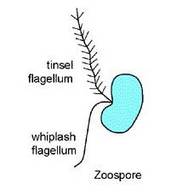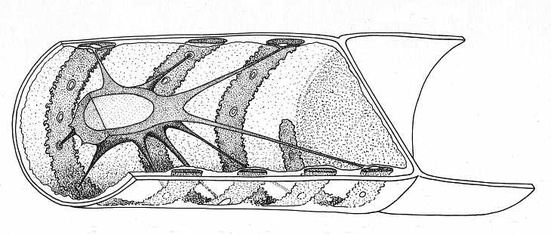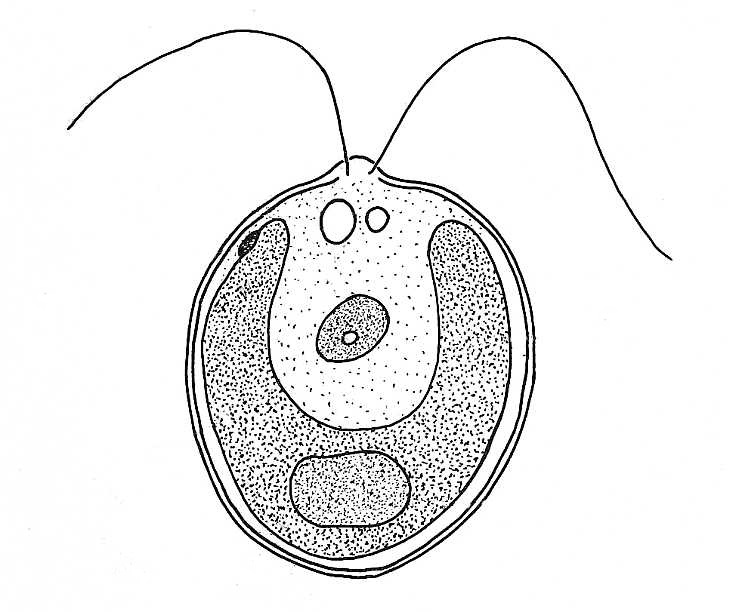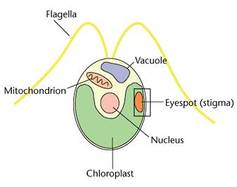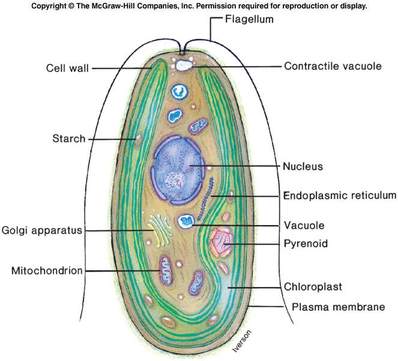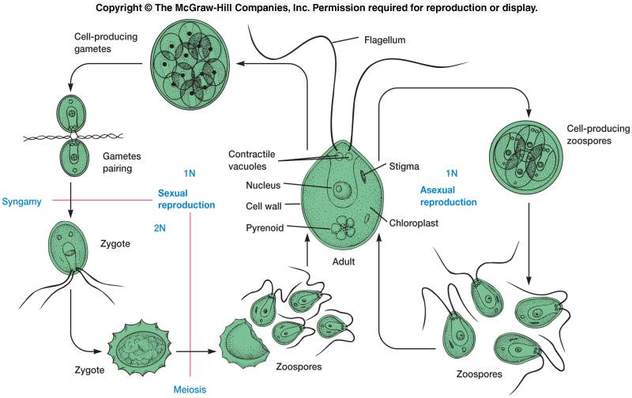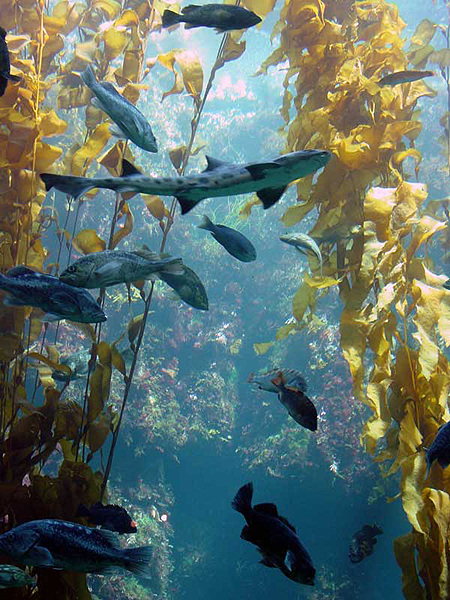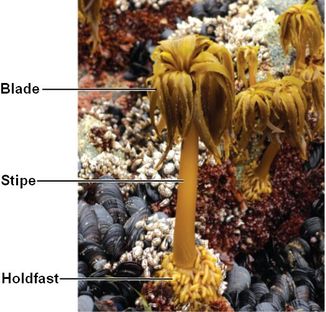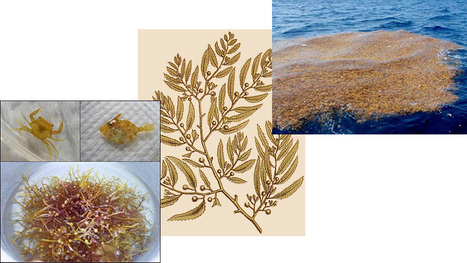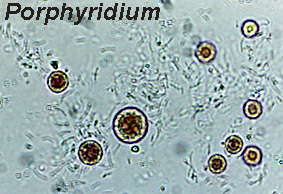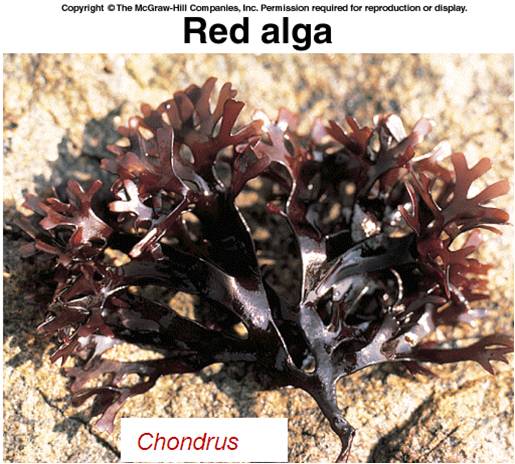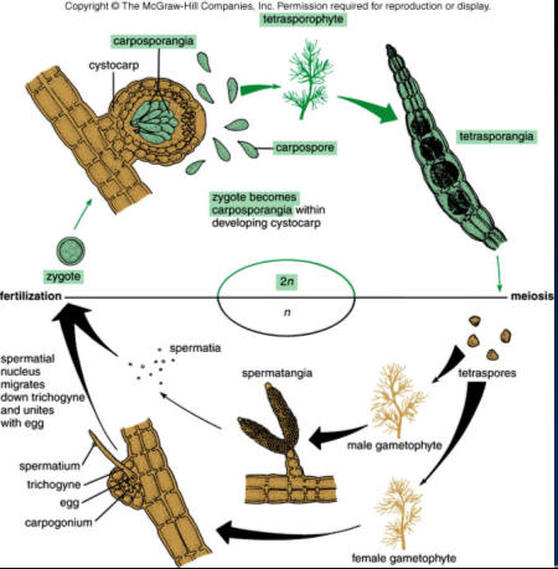ISC 11>CONTENT>2 DIVERSITY OF LIFE>3 KINGDOM-PLANTAE>THALLOPHYTA
Scope of syllabus
- Plant kingdom: Characteristic and economic importance
- Chlorophyceae
- Phaeophyceae
- Rhodophyceae
| plant_kingdom_Algae.pdf | |
| File Size: | 1341 kb |
| File Type: | |
CLASS PRESENTATION-1: THALLOPHYTA |
ANIMATIONS |
ALGAE
GENERAL CHRACTERISTICS
1. OCCURRENCE:
- Algae are of universal occurrence and they are found in variety of habitats, such as freshwater, sea water, on snow, on rocks, and on or within the plant and animal bodies. On the basis of habitat, they may be classified into the following three groups.
- A) Fresh water :Cladophora, Oedogonium, Ulothrix, Chara
- B) Marine : Ectocarpus, Sargassum, Fucus, Polysiphonia
- C) Terrestrial :soil, rocks, logs etc. (Vaucheria, Botrydium)
- D) Halophytic : Occur in saline water (Chlamydomonas sp, Stephnoptera)
- E) Epiphytic : They grow on larger algae or on bryophytes and angiosperms. (Oedogonium and Microspora on larger species of Cladophora, Vaucheria )
- F) Epizoic : Many algae grow on animals like snails, fishes and tortoise. Cladophora on snails, Stigeoclonium are found in the gills of fishes.
- G) Endozoic : Algae which occur in the tissues of animals are known as endozoic. Zoochlorella are found in Hydra viridis.
- H) Symbiotic : Several members of chlorophyceae and cyanophyceae form symbiotic association with fungi, bryophytes, gymnosperm and angiosperms.
- I) Cryptophytic : Algae growing on ice or snow are called cryophytic. The alpine and arctic mountains become red due to the growth of Heamotococcus nivalis.
- J) Lithophytic : Many blue green algae like Nostoc, Rivularia and Gloeocapsa commonly grow on moist and shady rocks.
- K) Parasitic : Cephaleuros virescens causes red rust in tea and coffee plants. Phyllosiphon is a parasite on the leaves of Arisarum vulgare.
- L) Thermophytes : Many blue green algae (Oscillatoria brevis, Synechoccus elongatus) are found in hot water spring (50-70 degree C), where normal life is not possible.
2. FORMS (Range of thallus structure)
- The vegetative structure of algae shows a wide variety and its ranges in form from unicellular to complex multicellular thalli..
- Their size ranges from one micron to several meters.
- On the basis of thallus organisation, algae are divided into the following five groups.
3. CELL STRUCTURE
- An eukaryotic cell organisation.
A. CELL WALL :
- It is composed of pure or mixed carbohydrates (Cellulose, mucilage, pectin etc.) and substances like alginic acid, fucoidin, fucin and hemicellulose are present in brown algae, pectin in red algae, silica in diatoms.
- A true cell wall is, however absent in some algae like Euglena, Gymnodium and Pyramimonas. They have pellicele.
- Algal cells are covered by mucilage which protect them from desiccation and epiphytic growth and decaying effect of water.
B. FLAGELLA :
|
C. NUCLEUS :
- In uninucleate algae the nucleus generally lies alongside the cell wall but sometimes it is suspended in the center of the cell by fine cytoplasmic threads.In multinucleate members the nuclei usually occur between the vacuoles and plastids in the cytoplasm.
D. EYE SPOT
E. VACUOLES
- Except cyanophyceae, mature cells of almost all classes of algae posses one or more vacuoles.
- Vacuoles are the main osmoregulatory organ in the cell and help in regulating the absorption of water and solutes.
- Sometimes, vacuoles also reserves food material, such as laminarin and chrysolaminarin.
- Gas vacuoles are characteristic feature of cyanophyceae.
F. PIGMENTS
- Algal cells have a characteristics colour due to the presence of a combination pigments, specific to each class.
- The various types of pigments found in algal cell are:
- A) Chlorophyll:
- B) Xanthophyll
- C) Carotene
- D) Phycobilins : Phycobilins are red (Phycoerythrin) and blue (phycocyanin) pigments which are confined to Rhodophyceae, and cyanophyceae respectively.
G. PYRENOIDS
- Pyrenoids are proteinaceous bodies present in chromatophores.
- These organelles are considered to be associated with synthesis and storage of starch.
- Number of pyrenoids vary in different algae.
4. TISSUES
- Mechanical tissues found in land plants are absent in algae.
- Vascular tissue system is also absent.
5. REPRODUCTION
- Reproduction in algae takes place by vegetative, asexual and sexual methods.
A. VEGETATIVE REPRODUCTION: It is the most common method of reproduction in algae and takes place by the following means.
- Fission
- Fragmentation
- Hormogonia
- Adventitious tubers
- Budding.
B. ASEXUAL SPORES: It takes place by a variety of motile and non-motile spores. The types of spores are as following.
- Zoospores: Motile, naked structure with two , four or many flagella.
- Aplanospores: Non-motile spores, commonly found in terrestrial algae, but some aquatic algae also form them during drought conditions. Have distinct wall and absence of flagella.
- Hypnospores: Thick walled aplanospores.
- Tetraspore : The diploid plants of some algae form aplanospores which are called tetraspores.
- Autospore : The aplanospore with a structure similar to the parent cell are called autospores.
- Akinete : In some algae vegetative cells develop into thick walled spore like structure with abundant food reserves. Unlike aplanospores, akinete always have additional wall layers around the protoplast which are fused with the parent wall.
C. SEXUAL REPRODUCTION :
- All groups of algae, except cyanophyceae, reproduce sexually when gametes fuse to form zygote.
- On the basis of the structure and physiological behaviour of sex organs and their complexity,the following three types of sexual reproduction.
- Isogamous : In this the gemetes which fuse to form zygote, are morphologically and physiologically similar.
- Anisogamous : Fusion takes place between morphologically and physiologically distinct gametes.The microgamete are smaller and more active, whereas the feamle gamete are larger and sluggish.
- Oogamous : In this large non motile gamete (egg) fuses with a small motile gamete (sperm or antherozoid).
CHLOROPHYCEAE
HABITAT
- Green algae are cosmopolitan in distribution.
- Majority of them live in fresh water, only 10 percent are marine. (Ulva, Caulerpa)
- Epiphytic- found on tree trunks- Protococcus
- Epizoic- growing on animal bodies- Cladophora on pond snails
- Parasitic- Cephaleurus- causes red rust disease of tea leaves.
FORMS (RANGE OF THALLUS)
- The plant body may be unicellular, colonial or filamentous.
CELL STRUCTURE
|
REPRODUCTION
- Vegetative reproduction usually takes place by fragmentation or by formation of different types of spores.
- Asexual reproduction is by flagellated zoospores produced in zoosporangia.
- The sexual reproduction shows considerable variation in the type and formation of sex cells and it may be isogamous, anisogamous or oogamous.
- ANIMATION : Reproduction in chlamydomonas
ECONOMIC IMPORTANCE
- Food : A number of green algae are used as food, e.g., Ulva, Caulerpa, Enteromorpha, etc. Chlorella is a rich source of lipids, proteins, carbohydrates
- Antibiotics : Chlorella and Caulerpa are used for extracting antibiotics.
- Soil fertility : Soil fertility increases by soil inhabiting green algae.
- Sewage disposal : Chlorella and Chlamydomonas help in oxidation in the sewage ponds.
- Space flight : Chlorella is used in prolonged space flights for generation of oxygen and food and utilisation of CO2 andexcretory wastes.
- Bloom : Excessive growth of Chlorella , Scenedesmus, Chlamydomonas etc. gives bad odour and taste to water. This excessive growth result in algal bloom.
PHAEOPHYCEAE (240 genera and 15,000 species)
|
HABITAT :
FORMS :
|
|
Sargassum
|
|
CELL STRUCTURE
- Cell wall
- Cell wall is differentiated into two layers.
- The outer mucilagenous layer has alginic and fucinic acid whereas the inner layer is mainly cellulosic.
- Pigments
- They possess chlorophyll a, c, carotenoids and xanthophylls.
- They vary in colour from olive green to various shades of brown depending upon the amount of the xanthophyll pigments.
- Besides these pigments, the brown algae also contain large amount of a brown pigment, fucoxanthin. Fucoxanthin masks green colour of chlorophyll pigments and that is why these algae are brown in colour.
- Flagella : 2, Unequal, lateral
- Reserve food material: Mannitol (a sugar alcohol) and Laminarin starch.
REPRODUCTION
- Vegetative reproduction takes place by fragmentation.
- Asexual reproduction in most brown algae is by biflagellate zoospores that are pear-shaped and have two unequal laterally attached flagella.
- Sexual reproduction may be isogamous, anisogamous or oogamous. Union of gametes may take place in water or within the oogonium (oogamous species). The gametes are pyriform (pear-shaped) and bear two laterally attached flagella.
ECONOMIC IMPORTANCE
- Food : Some species of brown algae are used as food in Japan, and young stipes of Laminaria, Macrocystis and Sargassum are eaten in certain parts of Europe and America.
- Fodder : Many seaweeds such Sargassum, Laminaria and Fucus are used as fodder for the cattle and poultry.
- Source of Iodine and Potash : Fucus and Laminaria are rich sources of iodine. Potash occurs in Macrocystis and Nereocystis abundantly.
- Fertilisers and Manures : Macrocystis and Nereocystis are used as fertilizers and manures in farm lands near the sea coasts.
- Medicines : Ascophyllum and Laminaria yield antibiotic like substance. Sodium laminarin sulphate, obtained from Laminaria is a blood anticoagulant.
- Alginic acid : Kelps such as Laminaria and Macrocystis yield alginic acid. Alginic acid is one of the constituent of phycocolloids. It is used as a thickening agent in baking industry, paint industry, rubber industry and pharmaceutical preparation.
- Menace to shipping : Sargassum and Ectocarpus get entangled with the lower part of the ships and slow down their speed. Some grow on the wood work of ships and cause serious damage by corroding.
RHODOPHYCEAE (831 genera, 5250 species)
HABITAT :
- Majority of the red algae are marine with greater concentrations found in the warmer areas.
- They occur in both well-lighted regions close to the surface of water and also at great depths in oceans where relatively little light penetrates.
- The red algae also exhibit a high degree of epiphytism and parasitism with considerable specificity.
- Few freshwater: Batrachospermum
- Terrestrial: Porphyridium
- Epiphytic or parasitic. (Ceramium codicola)
FORMS :
- The thallus ranges from simpler unicellular to complex multiaxial form.
- Unicellular : Porphyridium
- The common members are: Polysiphonia, Porphyra Gracilaria and Gelidium.
CELL STRUCTURE
- Cell wall :- cellulose, pectin and phycocolloids.
- Pigments: chlorophyll a, d, phycoerythrin and phycocyanin.
- Reserve food: Floridean starch
- Eye spot: Absent
REPRODUCTION
- The red algae usually reproduce vegetatively by fragmentation.
- They reproduce asexually by non-motile spores and sexually by non-motile gametes.
- Sexual reproduction is oogamous and accompanied by complex post fertilization developments.
ECONOMIC IMPORTANCE
- Some red algae are cultivated as food. Porphyra is grown in shallow sea water in Japan and China and Chondrus crispes (Irish moss) in Ireland.
- Chondrus species yield an extract, the Carageenin. It is used in the preparation of laxatives, cosmetics and in making chocolates, ice cream toothpaste, paints etc.
- Gelidium, Gracilaria, Chondrus and Ceramium are used in the manufacture of agar. It is used in medicine as a laxative, in clarification of liquors and also as a culture medium.
- Extracts from Corallina are used for the tratment of kidneys, bladder and lung diseases.
- Calcareous red algae play an important role in the formation of so called coral reef.
- Rhodomonella and Polysiphoria are used to obtain bromine of commercial importance.
